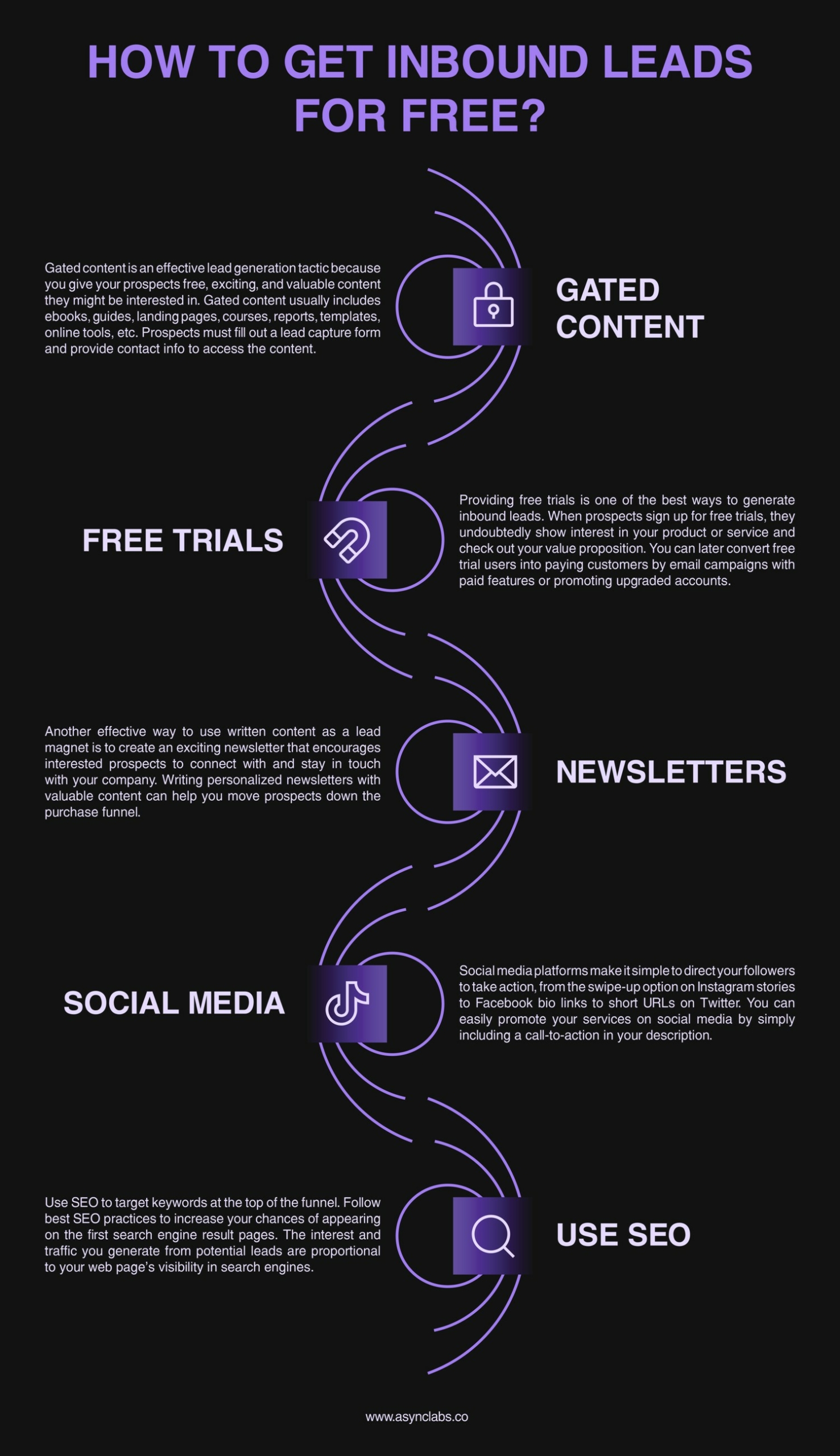How to create an effective inbound lead generation strategy and grow your business?
Creating leads is the first step in expanding the growth of your business. Lead generation stimulates your potential audience’s interest in your products and services.
Your lead generation efforts will result in two types of leads: inbound and outbound leads. Find out their main differences and how to attract more inbound leads in this article!
What is a “lead”?
First, let’s define a lead.
A lead is any person who expresses an interest in a company’s product or service.
Leads usually hear from a company or organization after initiating the contact. This can be done by submitting personal information for an offer, free trial, or subscription rather than receiving a cold call from someone who purchased their contact information.
Assume you take an online quiz to learn more about robot vacuum cleaners. After a few days, you receive an email from the company that created the survey, asking how they can assist you with vacuum cleaners. This procedure would be far less intrusive than if they had called you out of the blue, right?
Leads are part of the consumers’ process from visitor to customer. Various leads are based on their qualifications and where they are in this process.
What is inbound lead generation?
An inbound lead generation is a practical approach to pulling your target audience into your business through valuable, exciting content and effective SEO practices. The goal is to attract your potential customers.
There are three different categories of inbound leads, depending on their level of engagement.
- Marketing qualified leads (MQL): perform simple actions like website visits and completing a lead capture form in exchange for an online resource such as a report, ebook, or worksheet. For example, this is someone who fills out a landing page form for an offer, i.e., an ebook.
- Sales qualified leads (SQL): leads who show interest beyond consuming content. For instance, this is someone who sends inquiries about your product or service, pricing, and package offers.
- Product qualified leads (PQL): leads who have used the brand’s product on a free trial. This customer uses your free version but engages or asks about features available in a paid package.
An inbound lead is a B2B prospect attracted to your content and converts as part of your inbound lead generation strategy.
Inbound leads are the people who:
- Download your eBooks
- Contact the sales team after reading your content
- Fill in a form or survey
- Request a demo after watching a webinar
First, you must identify the proper channels to connect with your audience and establish strong visibility. For example, a majority of people are consuming social media. Think about the different ways to promote your business on social networks.
What is outbound lead generation?
Nowadays, consumers are fed up with traditional marketing methods and try their best to avoid them.
We turn off the television and the radio whenever we see an ad, turn on ad-blockers on the computer to stop seeing ads, and successfully ignore billboards.
In marketing, it is called outbound. Outbound lead generation refers to the strategic approach of reaching the target audience through cold emails, phone calls, impactful advertising billboards, and ads.
How do you get inbound leads?

Your prospects will have varying levels of understanding about the best ways to overcome obstacles and achieve their objectives. You have to understand where they are in the buyer’s journey, from problem awareness to considering potential solutions to making a decision.
The inbound lead generation methodology connects with prospects by providing value as they progress through the sales funnel. There are a few ways to provide prospects with high-quality, free content:
Gated content
This strategy involves trading high-quality information for a subscription and leading information from prospects. When your content “hides” behind a subscription gate, it can significantly increase its perceived value and make your audience demand it.
Gated content is an online resource accessible only after a prospect fills out a form. In contrast to blog posts, gated content is restricted. Prospects must fill out a lead capture form and provide contact info to access the content.
This is an effective lead generation tactic because you give your prospects free, exciting, and valuable content they might be interested in.
Gated content usually includes
- E-books
- Guides
- Landing pages
- White papers
- Courses
- Reports
- Worksheets
- Templates
- Online tools
Pro tip: Before diving into gated content, you should develop a good reputation for non-gated content.
Free trials
Providing free trials is one of the best ways to generate inbound leads. When prospects sign up for free trials, they undoubtedly show interest in your product or service and check out your value proposition. These prospects are still waiting to make a purchase. You can later convert free trial users into paying customers by sending them email campaigns with paid features or promoting upgraded accounts.
Newsletters
Another effective way to use written content as a lead magnet is to create an exciting newsletter that encourages interested prospects to connect with and stay in touch with your company. This strategy keeps you at the top of your customers’ minds because it allows your company to stay in touch with prospects. Writing personalized newsletters can help you move prospects down the purchase funnel.
What to include in your newsletters?
- New blog post
- Special offers
- Upcoming events
- Information about your products or services
Pro-tip: Because emails are often cluttered, use CTAs with compelling copy and an eye-catching design to capture your subscribers’ attention.
Social media
Social media platforms make it simple to direct your followers to take action, from the link sticker on Instagram stories to Facebook bio links to short URLs on Twitter. You can easily promote your services on social media by simply including a call-to-action in your description.
Use SEO
Use SEO to target keywords at the top of the funnel.
Follow best SEO practices to increase your chances of appearing on the first search engine result pages. The interest and traffic you generate from potential leads are proportional to your web page’s visibility in search engines.
Example of the conversion point
Let’s say you’re a company that sells glasses.
In the awareness stage of the buyer journey, the prospect is becoming aware that the blue light from different devices they use might be causing some eye tiredness and headaches. In this case, an awareness stage conversion point can be a downloadable infographic or a short ebook on the most common causes of work-induced headaches and the solution to the problem. People must fill out the form to access the ebook or infographic.
In the consideration stage, a potential customer will get information about different options to mitigate the screen-induced headache. And one of them is to get blue light glasses.
In the decision stage, the prospect knows they want to buy blue light-blocking glasses, but they need to decide which one to buy. A decision stage conversion point could be a Call to Action on a page, saying, “Talk to our experts and choose the right blue glasses for you.”
Get better leads with inbound lead generation
Now you know how to begin with inbound lead generation and conversion optimization – from when visitors enter your website to when they become leads.
Once you define and start to track the lifecycle stage of all your leads, you’ll be able to do a much deeper analysis of the success of your lead generation efforts.
By looking at the number of generated leads and whether those leads are moving through the buying cycle, you can easily find ways to improve the overall buying process and see which part of the lead generation process is best for your business.
Continue to create fantastic offers, CTAs, blog posts, ebooks, landing pages, and forms — and promote them across multiple channels. The more you tweak and test your inbound lead generation process steps, the better your lead quality and revenue will be. Good luck!
